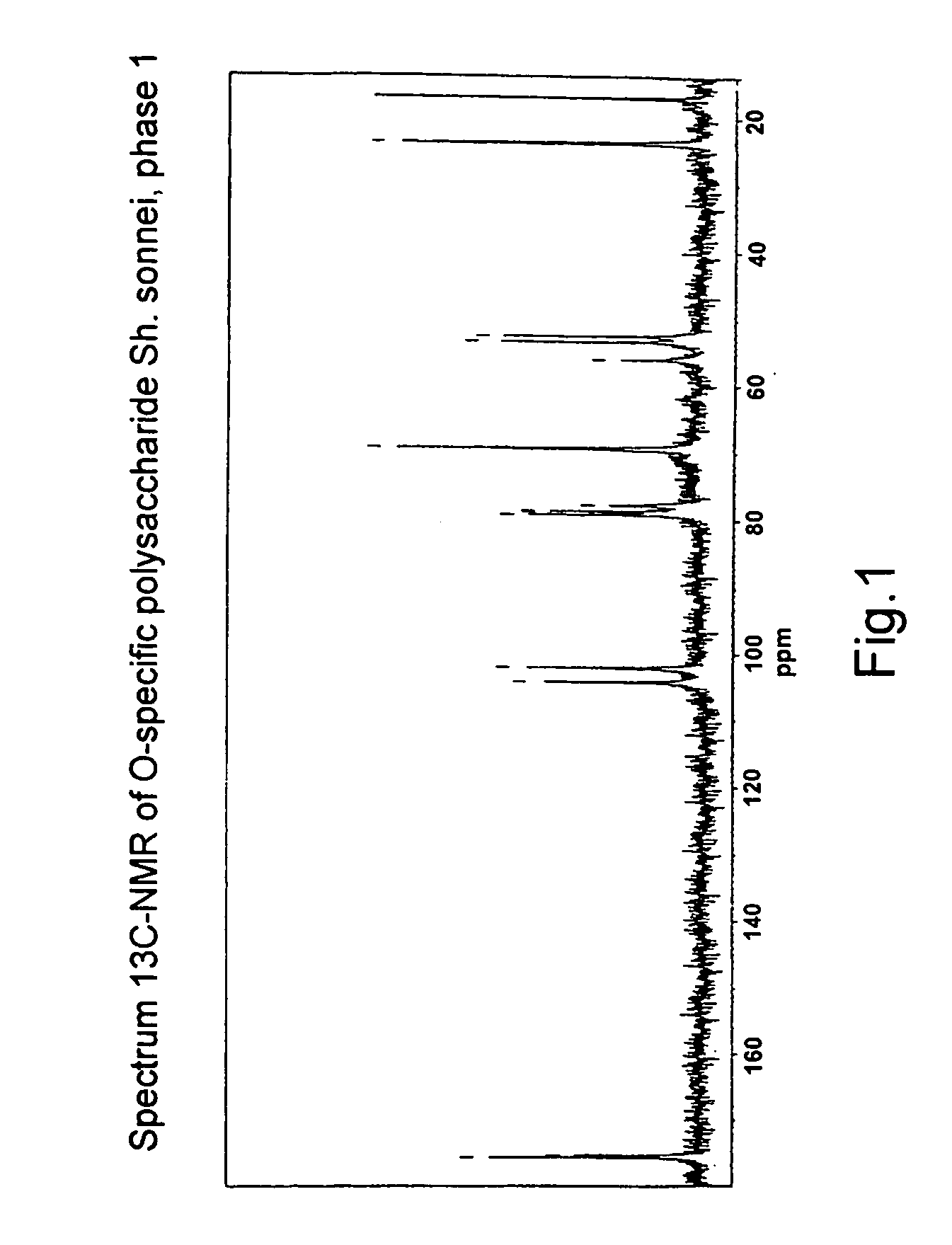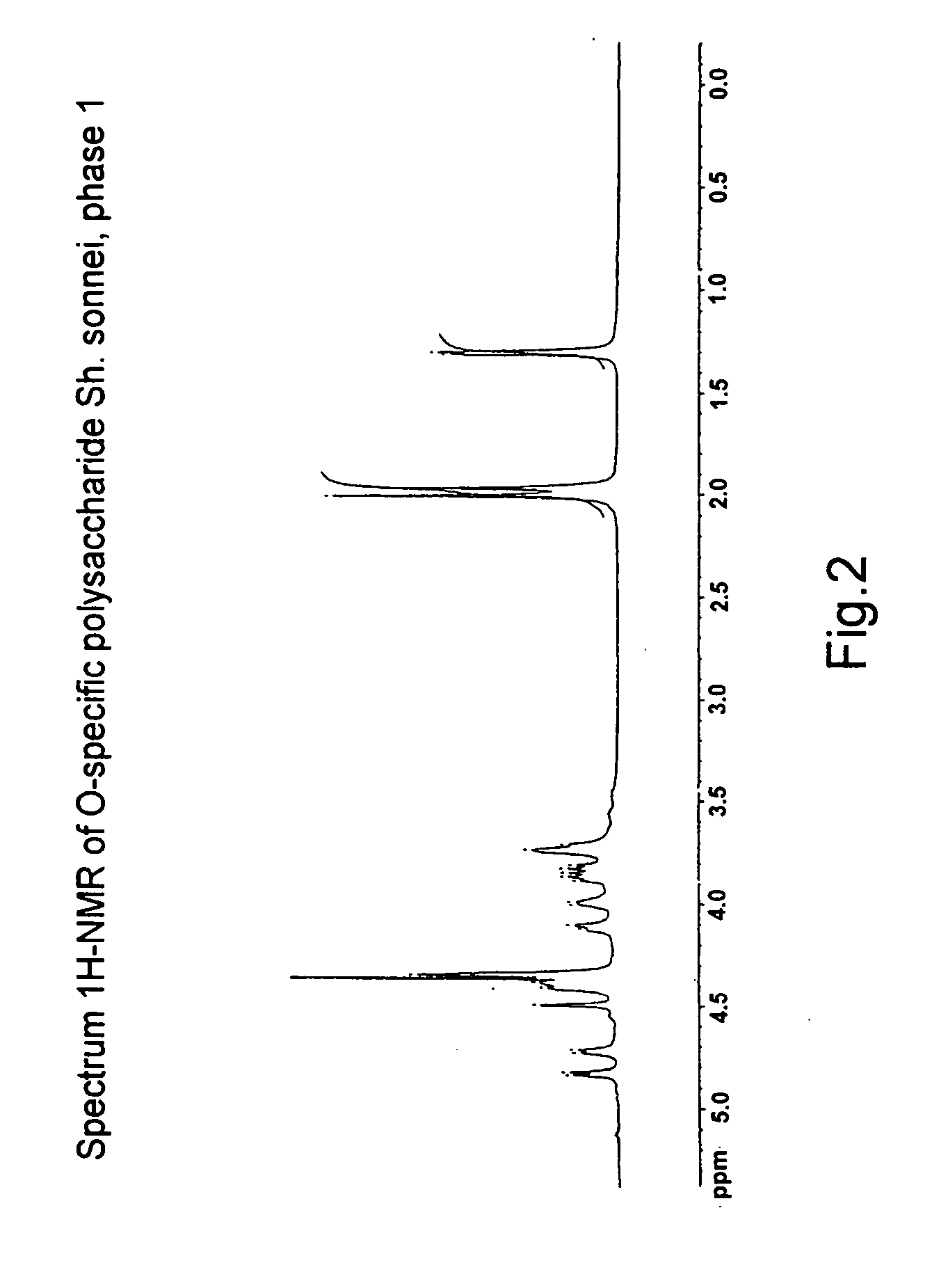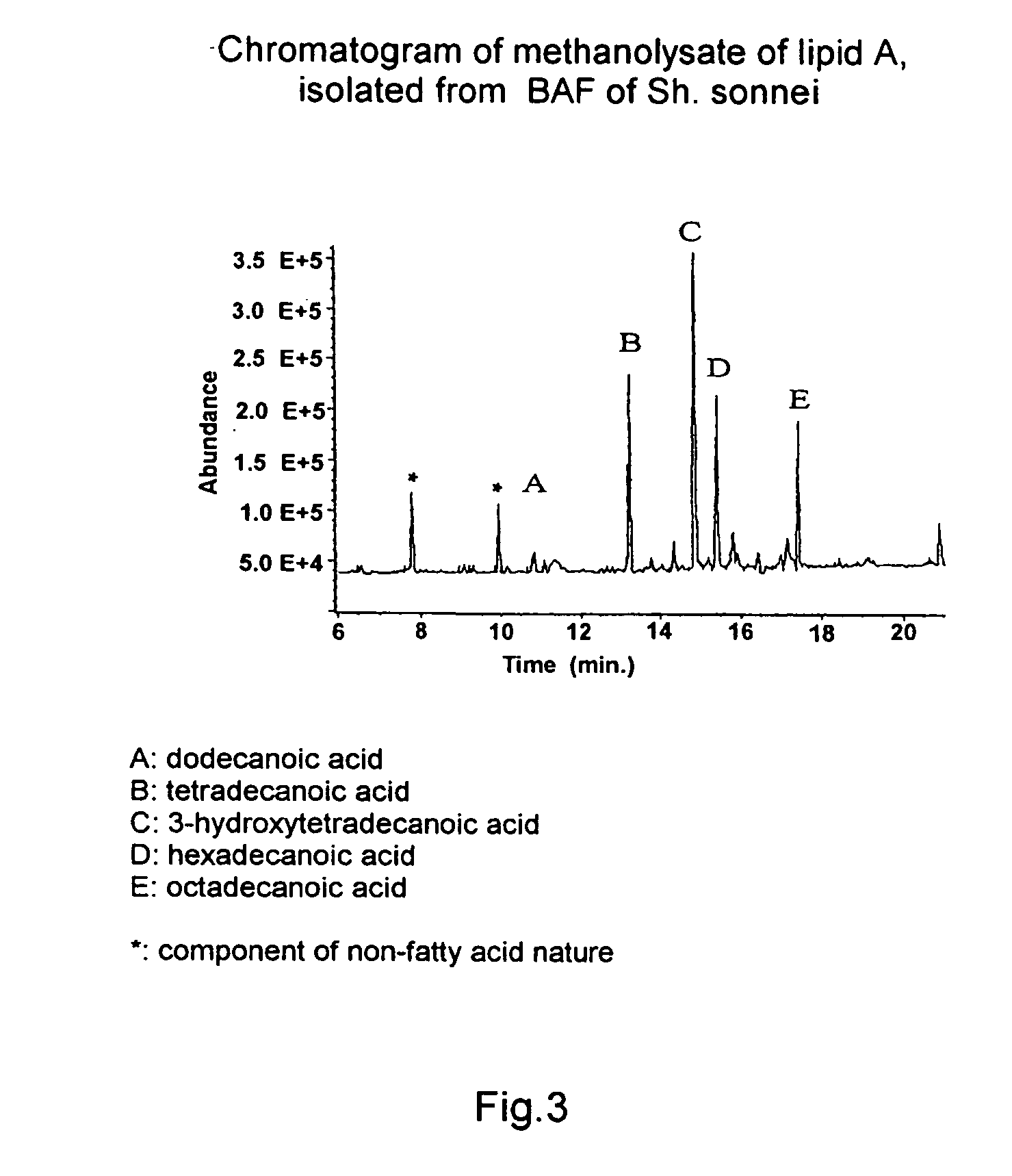Method of isolating biologically active fraction containing clinically acceptable native S-lipopolysaccharides obtained from bacteria producing endotoxic lipopolysaccharides
a technology of lipopolysaccharides and biological active fractions, which is applied in the field of medicine, can solve the problems of insufficient animal studies, human health hazards, and inability to directly use native lpss as a vaccin
- Summary
- Abstract
- Description
- Claims
- Application Information
AI Technical Summary
Benefits of technology
Problems solved by technology
Method used
Image
Examples
example 1
[0061] 1. Extraction
[0062] Extraction of bacterial cells Sh. sonnei, phase 1 (20 g), dried by acetone, was carried out by 45% aqueous phenol (700 ml) with intensive mechanical stirring in a thermostat vessel at 68-72° C. during 15 minutes, the suspension cooled to 10-15° C. was subjected to centrifugation for 40 minutes at 5000 g, the upper aqueous layer was isolated and dialyzed for 5 days against distilled water, the undissolved residue was removed by centrifugation at 13000 g and the supernatant was lyophilized. The yield of the extraction product was 12% of the weight of dry cells. The content of nucleic acids (UV-absorption) and proteins (Laury method) was 35-40% and 10-15%, respectively. The extraction product thus obtained (initial concentration 100 μg / ml) was active in a reaction of inhibiting passive hemagglutination (RIPHA) with rabbit serum, obtained with immunization by a dead culture of Sh. sonnei, phase 1, in a dilution of 1:128.
[0063] II. Enzymatic Hydrolysis
[0064]...
example 2
[0073] Confirmation of the structure of O-specific polysaccharide and lipid A, which are isolated from BAF from Sh. sonnei, using NMR-spectroscopy and chromato-mass-spectrometry.
[0074] O-specific polysaccharide and lipid A were isolated from BAF from Sh. sonnei as a result of mild acid hydrolysis and subsequent deposition of unsoluble lipid A.
[0075] The spectra of 13C-NMR and 1H-NMR O-specific polysaccharide (FIGS. 1 and 2, respectively) were recorded with the use of a Brucker WM-250 device in a D2O solution (the sample prior to record 1H-NMR-spectra was lyophilized from D2O) at a temperature of 297° K. or 303° K.
[0076] An analysis of the spectral data obtained according to the COSY, TOCSY and ROESY methods allowed to make an unambiguous attribution of all the signals in the 13C-NMR and 1H-NMR spectra and confirm that the repeating unit of PS is β-(1-3)-linked disaccharide 2-acetamido-2-deoxy-4-O-(2-acetamido-4-amino-2,4,6-trideoxy-β-D-galactopyranosyl)-L-altopyranosyluronic acid...
example 3
Preparation of a Conjugate of BAF from Sh. sonnei and Vi Antigen Salmonella enterica sv typhi
[0078] Twenty mg of 1-ethyl-3-(3-dimethylaminopropyl)carbodimide were added to a solution of 20 mg of Vi-antigen in 2 ml of water while stirring at room temperature for 10 minutes, maintaining pH to about 5.0 by adding 0.1M HCl. After 30 minutes of stirring at pH=5.0, a solution of 5 mg of BAF from Sh. sonnei was added to the reaction mixture. The reaction mixture was stirred during 16 h at a temperature of 10-12° C., dialyzed for 72 hours against distilled water and lyophilized. The obtained product was subjected to gel chromatography on a column (1×100) with Sephacryl S1000 (the limit of exclusion >8×108 D) in 0.2M NaCl. The fractions eluted near the void volume of the column (yield after dialysis 7 mg) were active in RTPGA with sera against LPS of Sh. sonnei, phase I and Vi-antigen S. typhi. The starting antigens were eluted from the column at a greater holding time. The data presented a...
PUM
| Property | Measurement | Unit |
|---|---|---|
| mole ratio | aaaaa | aaaaa |
| temperature | aaaaa | aaaaa |
| temperature | aaaaa | aaaaa |
Abstract
Description
Claims
Application Information
 Login to View More
Login to View More - R&D
- Intellectual Property
- Life Sciences
- Materials
- Tech Scout
- Unparalleled Data Quality
- Higher Quality Content
- 60% Fewer Hallucinations
Browse by: Latest US Patents, China's latest patents, Technical Efficacy Thesaurus, Application Domain, Technology Topic, Popular Technical Reports.
© 2025 PatSnap. All rights reserved.Legal|Privacy policy|Modern Slavery Act Transparency Statement|Sitemap|About US| Contact US: help@patsnap.com



